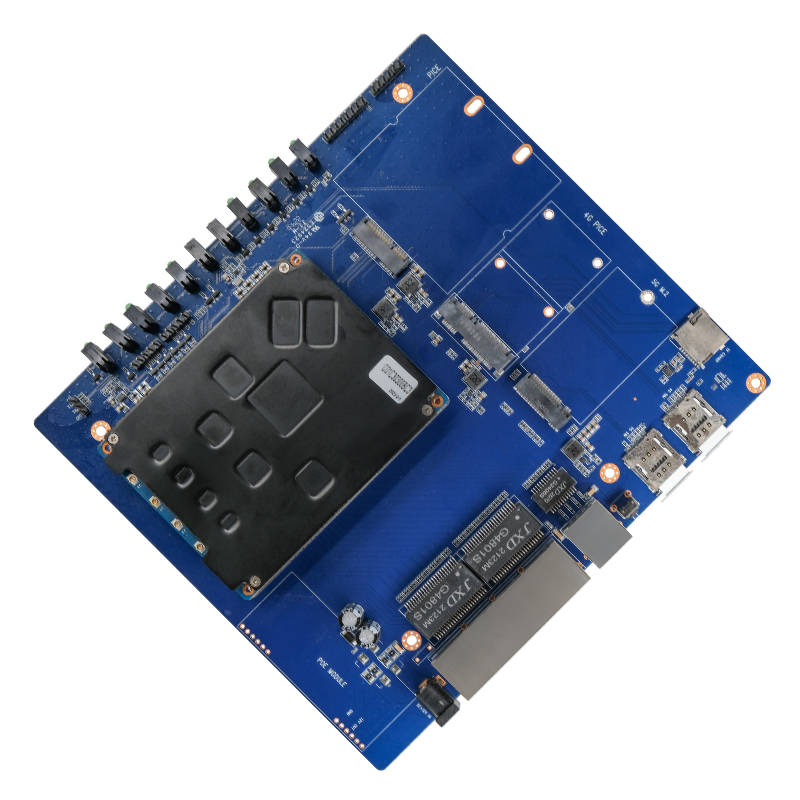Development boards have become indispensable tools in the world of electronics, offering both amateurs and professionals a versatile platform for designing, prototyping, and testing electronic circuits and systems. These boards integrate essential components, including microcontrollers or microprocessors, input/output interfaces, and various connectivity options, making them a critical asset in modern electronics development.

What is a Development Board?
A development board, often referred to as a dev board, is a printed circuit board (PCB) that facilitates the creation and testing of electronic projects. These boards are designed to help users easily develop and prototype new hardware and software systems without needing to design custom PCBs from scratch. They typically include features like:
Microcontrollers or Microprocessors: Central to the board, these chips execute the programmed instructions and manage the board's operations.
Input/Output Interfaces: These include pins, ports, and connectors for interfacing with sensors, actuators, displays, and other peripherals.
Power Supply: Many development boards come with built-in power regulation and management systems.
Communication Modules: Boards often feature modules for communication protocols like UART, SPI, I2C, Wi-Fi, Bluetooth, and Ethernet.
Programming Interface: A way to load code onto the microcontroller, usually via USB or other standard interfaces.
Key Benefits of Development Boards
1. Ease of Use
Development boards are designed for simplicity and user-friendliness. They often come with pre-installed bootloaders and easy-to-use development environments, enabling even beginners to start creating projects quickly. Popular examples like Arduino and Raspberry Pi have extensive online communities and resources, further simplifying the learning curve.
2. Versatility
The versatility of development boards is a significant advantage. They can be used in a wide range of applications, from simple DIY electronics projects to complex industrial automation systems. Their flexibility allows developers to experiment with different configurations and functionalities without significant investment.
3. Cost-Effectiveness
Development boards offer a cost-effective solution for prototyping and testing. They eliminate the need for custom PCB manufacturing during the initial stages of development, saving both time and money. Additionally, many development boards are affordably priced, making them accessible to a broad audience.
4. Rapid Prototyping
With integrated components and standard interfaces, development boards accelerate the prototyping process. Developers can quickly assemble circuits, write and upload code, and test their designs. This rapid iteration capability is crucial for reducing time-to-market and refining product ideas.
5. Extensive Ecosystem
Development boards often come with extensive ecosystems, including libraries, development environments, and community support. This ecosystem simplifies development by providing pre-written code, tutorials, and troubleshooting assistance. Boards like the Arduino have thousands of libraries and example projects available, streamlining development.
Popular Development Boards
1. Arduino
Arduino is one of the most popular development platforms, known for its simplicity and versatility. It uses an ATmega microcontroller and supports a wide range of shields and modules, making it suitable for various applications, from home automation to robotics.
2. Raspberry Pi
Raspberry Pi is a powerful single-board computer with a broad range of applications. It features an ARM processor, multiple connectivity options, and support for various operating systems, including Linux. Raspberry Pi is widely used in education, IoT projects, and even small-scale servers.
3. ESP8266/ESP32
These development boards are popular for IoT projects due to their built-in Wi-Fi and Bluetooth capabilities. The ESP8266 and ESP32 are cost-effective solutions for creating connected devices, with extensive libraries and community support.
4. STM32
STM32 boards are based on ARM Cortex-M microcontrollers and are known for their performance and reliability. They are commonly used in industrial and automotive applications, offering advanced features and robust development tools.
5. BeagleBone
BeagleBone boards are open-source single-board computers with powerful processing capabilities. They are ideal for applications requiring high-performance computing, such as robotics, AI, and industrial control systems.
Conclusion
Development boards are essential tools in the electronics industry, offering unparalleled versatility and efficiency. They enable rapid prototyping, cost-effective development, and the creation of innovative solutions across various fields. Whether you're a hobbyist looking to create your next project or a professional engineer developing cutting-edge technology, development boards provide the foundation for success in the world of electronics.
 Trolink Joint With Tuya to Make Iot Benefit Every Family
Trolink Joint With Tuya to Make Iot Benefit Every Family
 5 Key Indicators for WiFi Module Selection You Have to Know !
5 Key Indicators for WiFi Module Selection You Have to Know !
 IOT module is the brain of smart products
IOT module is the brain of smart products
 What is the signal coverage range of the WiFi module chip?
What is the signal coverage range of the WiFi module chip?